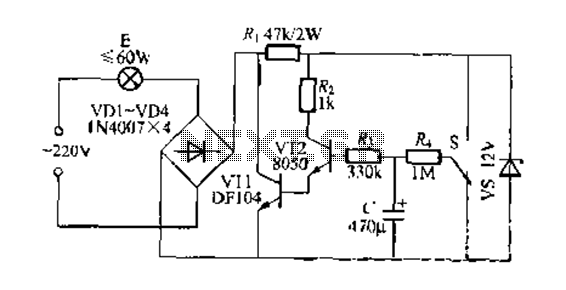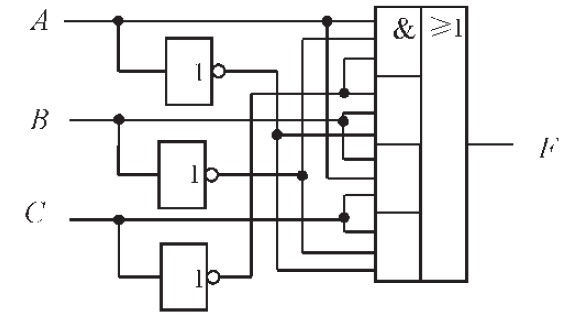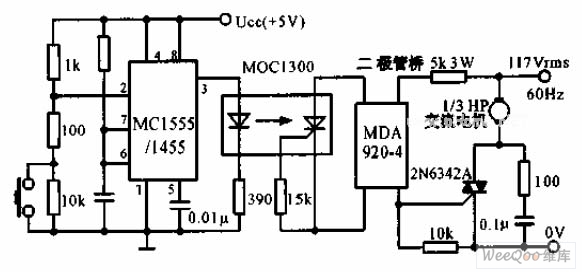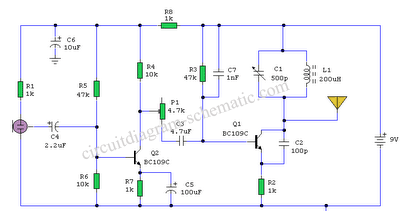
Easy fades fade switching circuit 2

This circuit is a gradual clear/fade switch for a two-wire connection, designed for simple installation. It activates the lights as needed by turning the switch dial upward. A positive supply of 2V is provided through resistor R. The capacitor (C) charges, causing the voltage across it to gradually increase, which in turn makes transistor VT2 gradually conduct. This action reduces the equivalent resistance of high-power tube VT1, causing lamp E to gradually brighten from a dark state. Once the capacitor is fully charged, the brightness of the lamp stabilizes. To turn off the lights, the switch dial is turned downward, allowing capacitor C to discharge through resistor R. This maintains the lamp's light but causes its brightness to gradually dim over time until it is completely extinguished. Resistor R1 should have a high back pressure rating, and the transistors and other components do not have special requirements.
This circuit utilizes a straightforward design to achieve a dimming effect for lighting applications. The core components include a capacitor (C), resistors (R and R1), and transistors (VT1 and VT2). The circuit operates by leveraging the charging and discharging characteristics of the capacitor to control the brightness of the lamp (E).
When the circuit is powered, the capacitor begins to charge through resistor R, resulting in a gradual increase in voltage across the capacitor. This increase influences the base of transistor VT2, allowing it to turn on progressively. As VT2 conducts, it reduces the effective resistance presented by high-power transistor VT1, which is responsible for driving the lamp. The lamp (E) thus brightens smoothly as the voltage rises, providing a visually appealing fade-in effect.
Conversely, when the switch is turned to the off position, the capacitor begins discharging through resistor R. This discharge process allows the lamp to remain lit for a brief period, but the brightness diminishes gradually as the capacitor voltage drops. The time it takes for the lamp to extinguish completely depends on the values of the capacitor and resistor used in the circuit, which can be adjusted to achieve the desired fade-out duration.
The circuit's design is robust, with no specific requirements for the transistors or other components, allowing for flexibility in component selection. The high back pressure rating for resistor R1 is crucial to ensure reliable operation under varying load conditions. Overall, this gradual clear/fade switch circuit is an effective solution for applications requiring controlled lighting transitions.End a two-wire connection gradually clear/fade switch circuit when the circuit is relatively simple to install. Turn on the lights when needed, H properly switch S dial upward, positive supply via] 2V R. The capacitor (1 charge, the C voltage across gradually increased, so make VT2 gradually step guide Annals of people, high-power tube VT1 equivalent resistance decreased, lamp E gradually brighten the dark. When the C full charge the brightness of the lamp will no longer change when you turn off the lights of the store s dial downward, C.
charge Pan R; to VT2 discharge lamp can be maintained light, but dichotoma brightness gradually darken over time, when (- charge when basic is done and the lights went completely extinguished. v r1 should be high back pressure power NI, N transistors, other components, no special requirements.
This circuit utilizes a straightforward design to achieve a dimming effect for lighting applications. The core components include a capacitor (C), resistors (R and R1), and transistors (VT1 and VT2). The circuit operates by leveraging the charging and discharging characteristics of the capacitor to control the brightness of the lamp (E).
When the circuit is powered, the capacitor begins to charge through resistor R, resulting in a gradual increase in voltage across the capacitor. This increase influences the base of transistor VT2, allowing it to turn on progressively. As VT2 conducts, it reduces the effective resistance presented by high-power transistor VT1, which is responsible for driving the lamp. The lamp (E) thus brightens smoothly as the voltage rises, providing a visually appealing fade-in effect.
Conversely, when the switch is turned to the off position, the capacitor begins discharging through resistor R. This discharge process allows the lamp to remain lit for a brief period, but the brightness diminishes gradually as the capacitor voltage drops. The time it takes for the lamp to extinguish completely depends on the values of the capacitor and resistor used in the circuit, which can be adjusted to achieve the desired fade-out duration.
The circuit's design is robust, with no specific requirements for the transistors or other components, allowing for flexibility in component selection. The high back pressure rating for resistor R1 is crucial to ensure reliable operation under varying load conditions. Overall, this gradual clear/fade switch circuit is an effective solution for applications requiring controlled lighting transitions.End a two-wire connection gradually clear/fade switch circuit when the circuit is relatively simple to install. Turn on the lights when needed, H properly switch S dial upward, positive supply via] 2V R. The capacitor (1 charge, the C voltage across gradually increased, so make VT2 gradually step guide Annals of people, high-power tube VT1 equivalent resistance decreased, lamp E gradually brighten the dark. When the C full charge the brightness of the lamp will no longer change when you turn off the lights of the store s dial downward, C.
charge Pan R; to VT2 discharge lamp can be maintained light, but dichotoma brightness gradually darken over time, when (- charge when basic is done and the lights went completely extinguished. v r1 should be high back pressure power NI, N transistors, other components, no special requirements.





